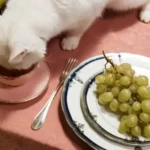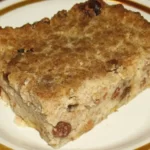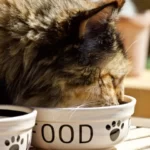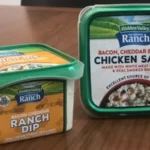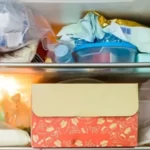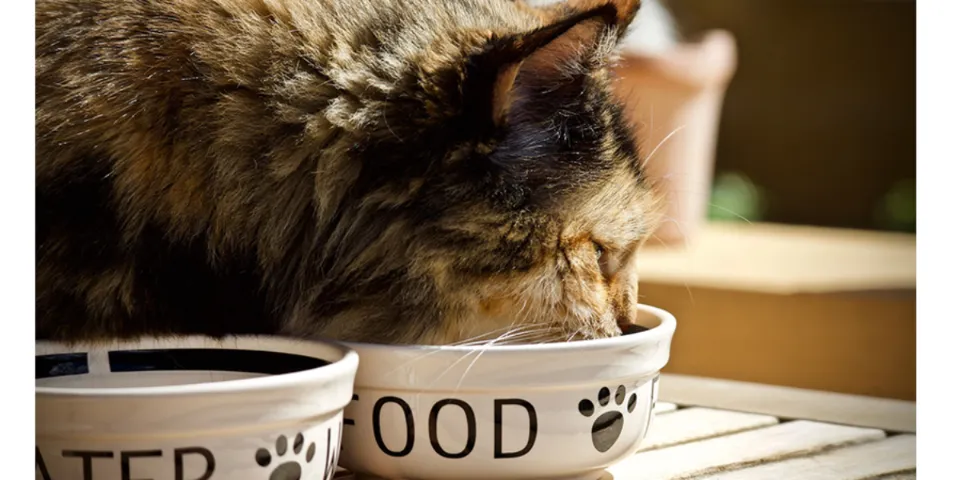
If you have cats and dogs in your home, then no doubt you have encountered your dog trying to take a tasty “snack” from the cat’s litterbox.
If you’re looking to keep your dog out of the cat food and litter box, we’ve made a list of 10 of the best ideas out there:
Table of Contents
Ways to Keep Your Dog Out of Your Cat’s Food
Put the Cat Food on a Table
It may be as simple as placing your cat’s food up on a raised table if you have a small dog. Dogs are less likely than most cats to be able to jump onto tables. But despite this, big dogs can frequently get to high-placed cat food.
For this use, stools and small end tables are suitable. We don’t advise using a table that you ordinarily wouldn’t want your cat on, like the dining table. It can be perplexing to occasionally let your cat eat up there and occasionally not. If you choose to employ this strategy, buy a table that is intended solely for your cat’s food.
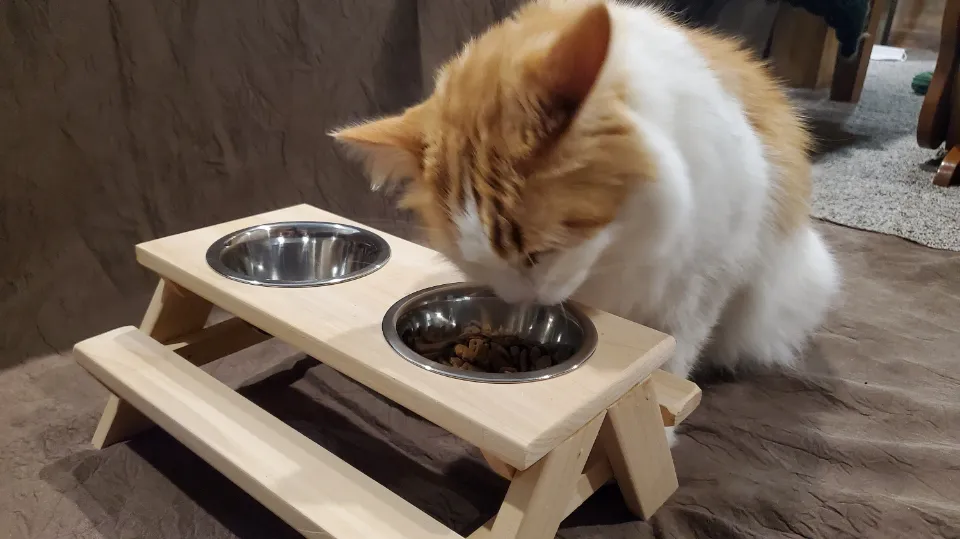
Install a Dog-Proof Gate
Because the cat’s food and litter box are typically kept in separate rooms, it can be difficult to keep the dog out of them. The cat needs enough room for both its food bowls and its litter box if you don’t want to stress it out.
Limiting the dog’s access to the space where you have these items by installing a gate that the dog can’t open but the cat can is a great way to achieve this.
The gate’s width can be adjusted to match the precise dimensions of your walls because it is adjustable. The small door at the bottom is big enough for the cat to fit through but not the dog, and it has a lock that neither the dog nor the cat can open.
Install a Cat Door
Installing cat doors in your home is a fantastic additional strategy for preventing the dog from getting into the cat food and litter. By doing so, you can restrict the dog’s access to specific rooms in your house by simply closing the doors.
Your cat is free to roam around in any room that has cat doors installed. This is very helpful because you can put the cat’s food far from its litter box.
You can install a variety of cat door models. Cat doors are installed on the doors as seen in the video. The cat door is concealed, which is a great feature of these. Your door has a cat door that slides in just far enough for the cat to enter but not far enough for the dog. The rest of your door is the same.
The Purrfect Portal Cat Door is yet another choice. Amazon sells a cat door similar to this one for interior doors. It fits interior doors that range in thickness from 1.25 to 1.75 Prime, both solid and hollow.
It is available in white and is more secure than other cat doors because it is fastened to the wall with 4 strong screws on either side of the door rather than using adhesives like other products.
Additionally, it has a brush that lines the passageway, giving your cat a quick full-body brush each time it passes through. The track is designed to keep the brush firmly in place as it slides into it. The brush, however, is optional.
Both with and without the brush, the cat door is functional. With dimensions of 6″ x 7.2″ with the brush and 7.5″ x 10.3″ without the brush, the Purrfect Portal Cat Door is a good fit for both small and large-sized cats. Cats up to 20 pounds can fit inside. The Purrfect Portal Cat Door also comes in an XL size if your cat is bigger than that.
Use a Dog-Proof Latch
A closeable door can also be used as a barrier for larger dogs. acquire and install a dog-proof latch. A cat could fit through the door thanks to these latches, which keep it slightly open. Large dogs cannot access your cat’s food, though, because they cannot fit through the opening.
These latches are frequently attached to the door using sticky pads, making it simple to attach or remove them.
This solution is ineffective for large dogs because small dogs can squeeze through the opening. A different approach will be required if your dog and cat are roughly the same size.
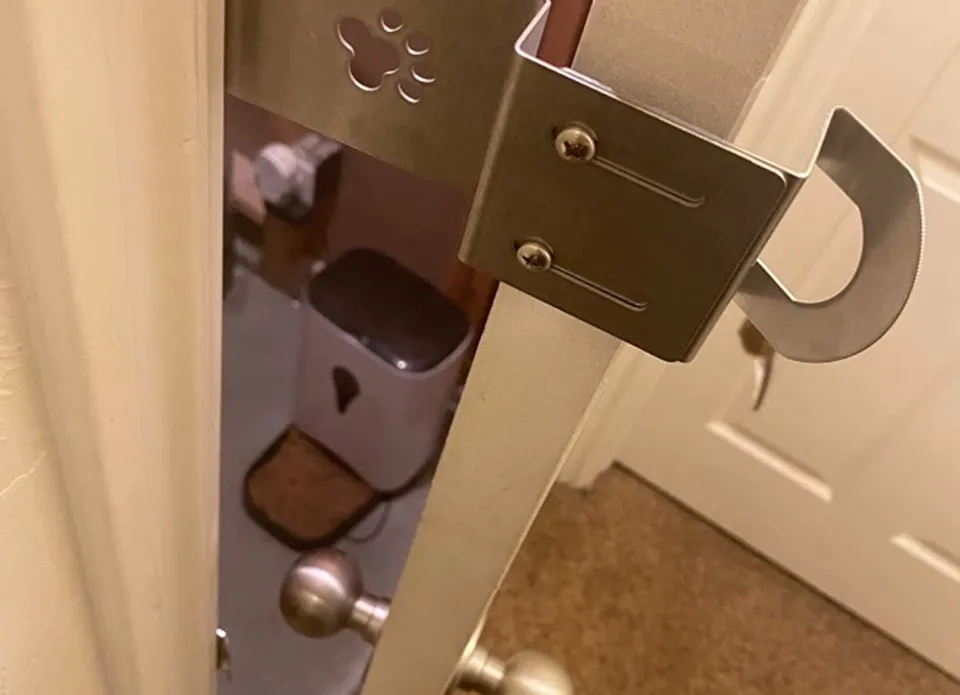
Get a Dog-Proof Feeding Station
Placing the food in a location that the dog cannot access will solve the problem if your dog is eating your cat’s food. Getting a dog-proof cat feeding station is a very easy way to accomplish this. This little compartment has a cat door to keep the dog out and is used to store the cat’s food bowl.
There are numerous models available for you to select from. Because it has an automatic cat door that reads your pet’s microchip and only allows access to your cat, this dog-proof feeding station from MeowSpace is very effective.
This makes it very helpful if you’re trying to prevent a small dog from getting access to your cat’s food. The cat door will not open for small dogs like Chihuahuas, despite the fact that they can fit through it.
Use a Puzzle Feeder
Your cat might be able to solve a puzzle feeder in some circumstances, but your dog might be completely lost. Since your dog won’t be able to get the food out of these feeders in the first place, they can be ideal for keeping it away from your dog.
This only works, though, if your cat is smarter than your dog.
Additionally, some large dogs might be able to break the toy or shake it until the treasure is released. It’s possible that other dogs will wait for your cat to retrieve the food before chasing it away and stealing it for themselves.
Getting enough food out for a full meal can also be challenging for cats. Additionally, most puzzle feeders don’t function with moist food.
Elevate the Cat’s Food Bowl
It’s time to act if your dog has a bad habit of consuming your cat’s food. Placing the cat’s food bowl up where the cat can reach it and eat from above while the dog can’t climb to it is a clever way to take advantage of the differences between cats and dogs.
Installing a cat tree in your home and setting the cat’s food bowl on the top level is the most effective way to accomplish this. Small dogs should not have access to the cat’s food, so this is the best method for doing so.
Small dogs like Chihuahuas can squeeze through the same openings that cats can, so installing a cat door, a door latch, or even a dog fence won’t keep them safe. They cannot climb a cat tree, so the food for the cat is secure there.
Feed Your Cat on a Schedule
If you’re currently free-feeding your cat, you could also feed him on a schedule. Dogs are much more likely to grab your cat’s food if you leave it out. Your dog will find it simple to sneak in and take it if it is always available.
Scheduled feeding makes your dog’s job much harder. You should ideally feed your cat and watch over them until they are finished. Remove the food after that.
This method eliminates your dog’s ability to steal the food. As long as you are present to supervise, it is foolproof.
While scheduled feedings do prevent your canine from stealing the food, they may also upset your cat. Your cat won’t be too happy if they suddenly can’t have access to food whenever they want!
Additionally, scheduled feedings require more time out of your day. You can’t just put food in the bowl and walk away. This method calls for supervision.
It can be difficult to move from free feeding to scheduled feeding. However, it might be the most effective way to stop food theft if you’ve tried other strategies without success.
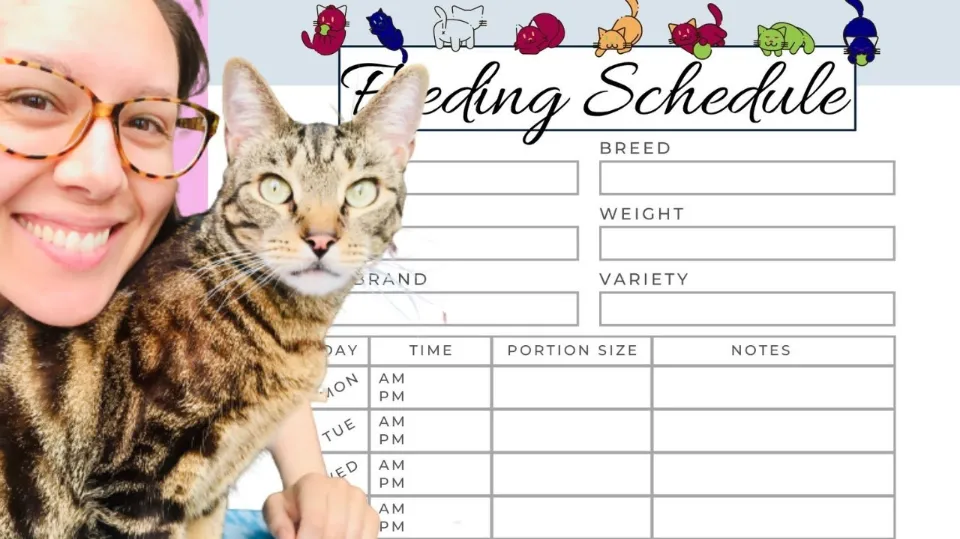
Feed Both Pets at the Same Time
In some instances, feeding both animals at the same time will help the situation. Less worry about the cat’s food will likely occur if your dog is eating what they are. Ideally, your cat will have time to finish their meal before your dog becomes interested once more due to hunger.
It is necessary to plan the meals of both animals. Unlike cats, which are typically slower eaters, dogs frequently eat their food as soon as it is placed in front of them.
So, supervision is frequently needed, especially if your dog has a particularly strong food-driven personality. They might not even notice that they just ate!
Provide Mental Stimulation
Sometimes, rather than doing so out of hunger, your dog may go after your cat’s food if they’re bored.
Many dogs need more mental stimulation than their owners are aware of. When a bored dog is left to their own devices, they often try to make their own entertainment, which may well involve eating more than they need to. For dogs who are bored, eating your cat’s food might be an easy fix.
Your dog’s disruptive behaviors might be reduced by giving them puzzle feeders, more training, and company throughout the day.
However, this approach only works for dogs who aren’t overly motivated by food. Some dogs will simply eat food whenever it is offered because they can!
Why Dogs & Cats Shouldn’t Share Food?
Taurine is one of the specific nutrients that cats need but which are insufficiently present in dog food. Heart or eye problems in cats may be caused by insufficient dietary taurine. However, compared to typical dog food, cat food contains more protein and is higher in calories. Overeating cat food may cause weight gain and a pudgy dog.
Dogs and cats need to eat at different times because their eating habits are different. Throughout the day, cats frequently visit the bowl and eat small mouthfuls of food. Dogs are typically gulpers who have evolved as gorgers. Your dog will empty the bowl if you leave cat food out for it to munch on all day.
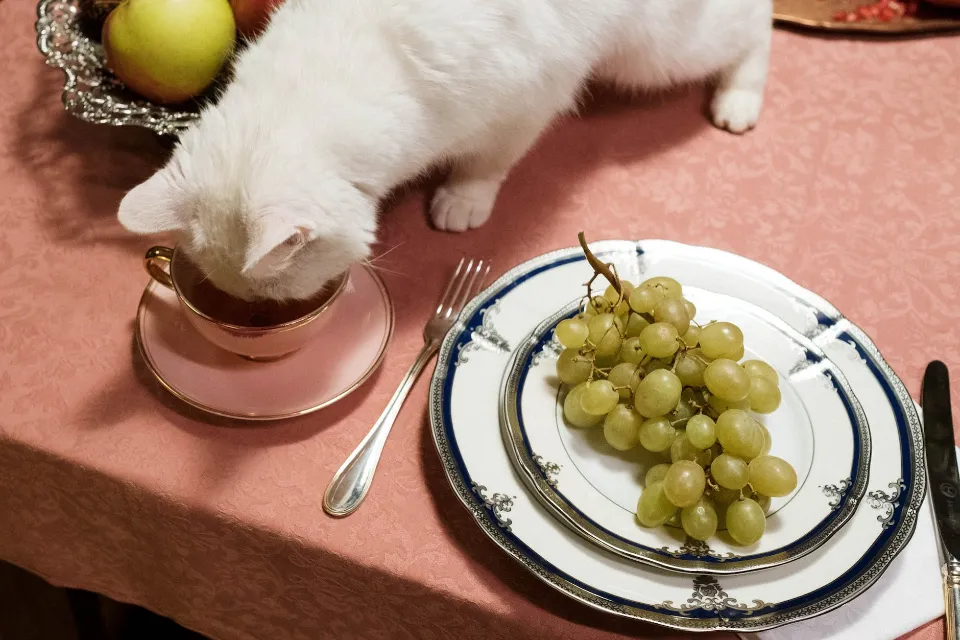
What Not to Do
There are numerous methods for keeping a dog away from the cat’s food and litter box, but there are some things you shouldn’t do. One of them, which we already mentioned, is that it is not hygienic to keep the cat’s food and litter box in the same enclosure or even in the same room.
Some pet owners have suggested using pepper, chili, or hot sauce in the cat’s litter box to deter dogs. Both the cat and the dog would be badly served by this. Because hot sauce is too potent for dogs, if the dog eats it along with cat poop from the litter box, it may experience severe digestive problems.
The hot sauce will land on the paws of the cats when they enter the litter box where it was hidden. Then, after washing, they will consume the hot sauce, which puts them at risk for the same digestive problems. Additionally, the hot sauce might harm their skin, which increases the chance that they’ll experience dermatological issues.
Using these potentially harmful techniques can be easily avoided because there are so many effective ways to keep dogs away from the cat’s food and litter box. Of course, rewarding your dog for staying out of the cat’s litter box area with some nutritious dog treats is a good idea as well.
How to Train Your Dog to Stop Eating Cat Food?
Make food bowls recognizable to begin with.To be fair to your dog, he or she might find it challenging to distinguish between a bowl of kibble that is appropriate for consumption and a bowl of kibble that should not be consumed. Make the kibble bowls look very different from one another to aid your dog in his or her search. If you have a placemat underneath your pet’s bowls, make sure it’s different and try out various bowl sizes and colors.
Teach your dog the “Leave It” command.(The AKC has a great tutorial) Once your dog knows “Leave It”, introduce cat food and repeat until they can successfully ignore the food. It may require daily practice for a few weeks, but if you’re consistent in your training, you’ll master it.
Take away any opportunities for your dog to consume cat food.Separating your animals when food is available is the best way to prevent your dog from eating cat food. Move your cat’s bowl to a different room that your dog can’t access as a starting point. Your dog won’t have the chance to steal the cat’s food if they never have access to it! Here are some options:
- A strong baby gate that only your cat can jump over should be installed if you have a small dog.
- Install a small cat flap in the door if you have a large dog, or place a tall baby gate in the doorway with a small opening for your cat.
- If your cat leaves any food behind after eating it, put it away.
- Place the cat’s bowl on a high table, dresser, washing machine, cat tree, or bookshelf. Most cats can easily jump to heights that a dog cannot. Even some cats have been observed dining on top of refrigerators!
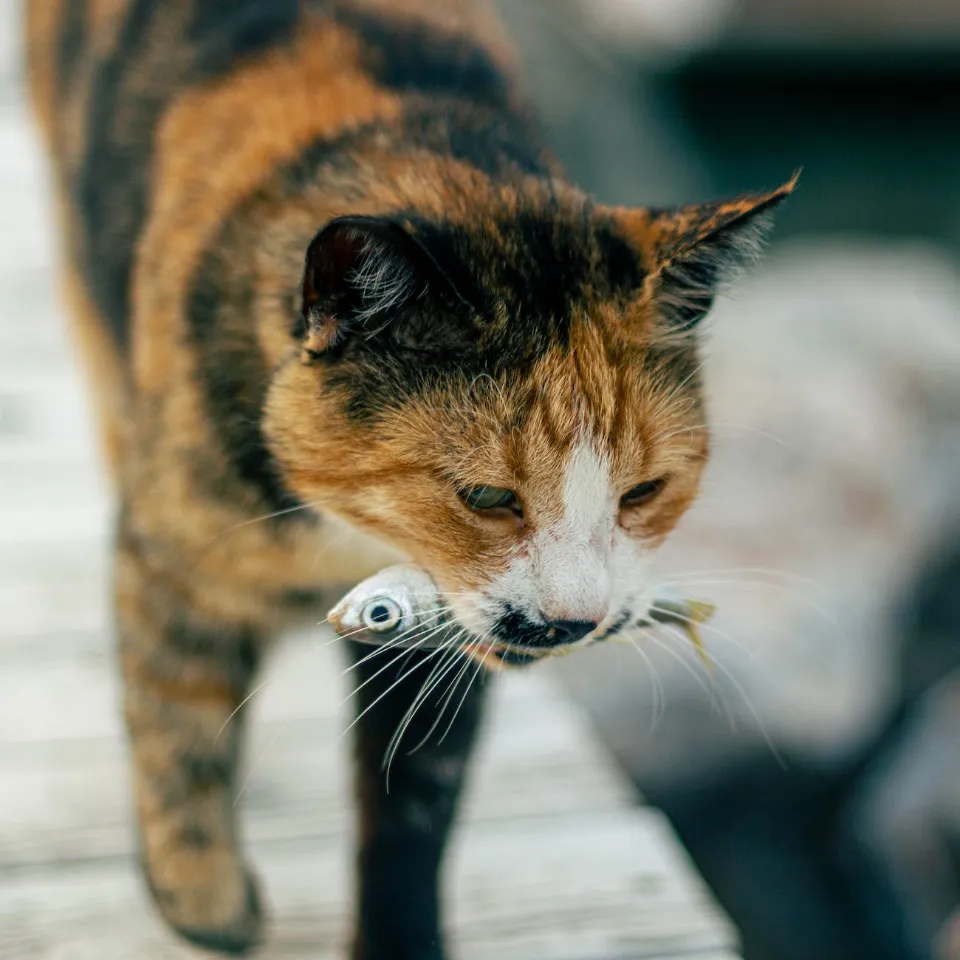
Summary
Some dogs will always eat food when it is available. Many breeds have a strong focus on food.
Your dog eating your cat’s food can cause all sorts of issues, though. For instance, obesity can occur if your dog consumes extra food over the long term. Additionally, it’s likely that your cat dislikes having its food taken.
Fortunately, there are a lot of things you can do to avoid this issue. You could, for instance, put your cat’s food high up or behind a barrier to make it inaccessible. In some cases, sophisticated puzzle feeders may be required.

